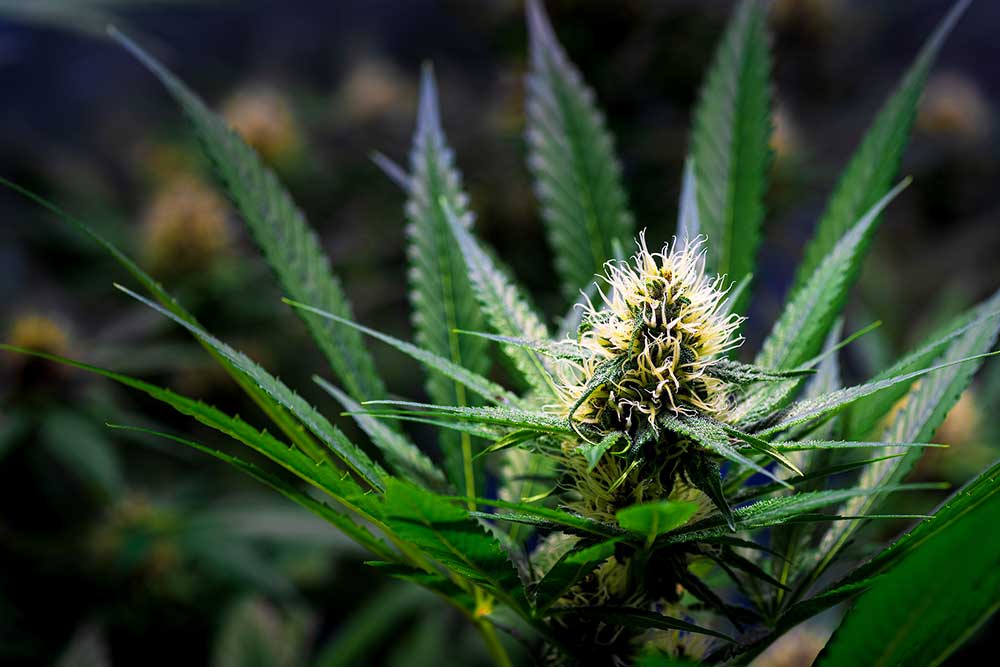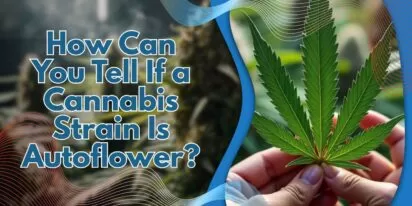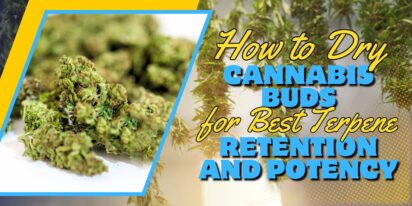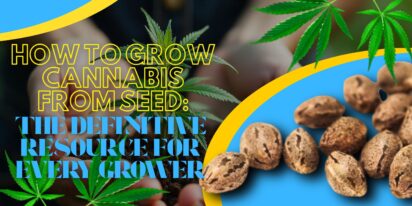Table of Contents

Sexing a marijuana plant is to know the gender of your plants as they enter the flowering stage. Knowing which of your plants is male or female is important to the overall yield of your grow room.
How can you sex your cannabis plants? Let us answer this question by looking at the identifying traits of a plants gender and explain the significance of male, female, and hermaphrodite plants.
It is important to note that every regular and autoflower Cannabis Seeds have a chance to grow into a male or female plant. The plant’s gender will become apparent when it enters the flowering cycle. At this time, their sex organs will grow and gain the characteristics of either a male or female plant.
The key word when it comes to spotting a female plant is hair. This plant will grow buds that have a pair of white hair or pistils sprouting from the top. In addition, the pistils and upper part of the bud will have tiny hair sprouting around it.
On the other hand, male plants will grow bulbous pollen sacs. The shape of these sacs is the same as the ones with the buds. However, these buds will only appear to grow big over time and not have a pair of pistils coming out at the top. The sex organs will also have no small hair surrounding the top like the female sex organ.
You may encounter a plant that will have both male and female sex organs. This type of plant is a hermaphrodite and is a common phenomenon among cannabis plants. For all intents and purposes, most herm plants are treated as male plants. What is interesting to note is the shape of a hermaphrodite’s male organ, which looks elongated instead of being round. This is why breeders call the flowers bananas.
While waiting for your plants to develop its sex organs is the tried and true way of identifying their gender, some breeders find signs of a plant’s gender throughout its growth cycle. One method is to check on the growth pattern of the plants.
Male cannabis plants usually grow taller than female plants and have a thicker central stalk. The thick stalk trait is to provide more support to the top of male plants. In addition, males usually have fewer branches and leaves than female plants. Meanwhile, female plants have thin central stalks and complex branches full of numerous leaves.
Some breeders found a way to identify a seed’s sex during the germination period. If the taproot shoots out of the sides of a seed, it may turn into a male plant. Should the seed grow its taproot from its top or bottom, it may grow to a female plant.
Take note that the two methods in identifying a plant’s sex are not accurate. Do not take out a plant from your garden right away if it has a thick central stalk than other plants or its taproot sprouted from the side. The plant may still turn to a female one when it enters the flowering stage. What you can do instead is to mark the plants that have early characteristics of male plants. When your plants enter the flowering period, you can give the marked plants a close check for any production of pollen sacs on their branch joints.
A sure-fire method is to create clones from the plant and allow it to go through the vegetative phase in a short time. This method involves cutting a sizable part of your plant and allow it to grow in a medium. When the clone grows into a plant in a few days, expose it to a 12/12 daylight to nighttime schedule. This will force the plant to enter the flowering phase and show its gender earlier than the mother plant.
The method works because clones have the same traits and genetics as the mother. This also includes the gender of the mother plant. In order to perform this test, you will need a separate indoor grow area with a grow lamp. This will let you expose only the clones to the 12/12 lighting schedule. It is also important to label the clones and the mothers to avoid any confusion once the clone shows its sex organs.
The main difference between the three types of the plant comes down to the bud producers and pollen makers. Female plants are your former type of plant while males and hermaphrodites make up the latter. If you are only looking to cultivate cannabis plants for their high-inducing buds, you will only want to have female plants within your garden.
You might be asking if the pollen sac of male plants are consumable or can still be smoked. To answer your question, the sac is consumable. However, it will not have the same psychoactive effect or potency as the buds from female plants. Only female plants produce a significant amount of cannabinoid that is equal to their strain. Cannabinoids such as THC and CBN are responsible for a marijuana weed’s effect. Unfortunately, male plants do not produce the same amount of cannabinoids as its female counterpart.
Hermaphrodites are slightly complicated in a way that it can still produce the same type of bud as its female counterpart. This is only possible if there are a few male flowers and more female buds surrounding the plant. Should this be the case, you can extract the male bananas with a tweezer coated in rubbing alcohol. Upon cutting the organ, spray the flowering area with water to remove the pollen. Continue monitoring the plant for any male organs to sprout out of it. If a herm plant happens to have too many bananas and few buds, consider discarding it or harvest its pollen in a separate room.
As soon as you find any male or herm plants in the garden, you will want to discard or place the plants in a room that is away from the rest of your female plants. Allowing even one male or herm plant in your grow space can lead to unwanted fertilization of the female ones. Pollinated female plants will stop building up its buds with various cannabinoids. Instead, it will focus all of its energy on producing seeds within its buds.
Unless you are looking forward to creating a batch of seed for a specific strain, you will want to separate the females from pollen producing plants right away. This is not to say that it is not worth your while to make your own seed from your favorite strain. However, there is an efficient way of producing seeds and buds at the same time. It is important to note that a single female plant can give you more than 20 seeds when pollinated. Simply allowing male plants to pollinate all of your bud-producing females will be a waste of your time and effort.
You have no control over the gender of a regular seed, including autoflowering ones. They will grow into a male or female plant regardless of the type of nutrient you feed them or how you germinate the seeds. If you want to nearly all of the seeds to turn female, you can move the odds to your favor by cultivating feminized seeds instead of regular ones. Feminized seeds have the genetic coding to grow into a female plant because it has two mothers.
While feminized seeds are available in most seed banks, you will often find fem seeds for popular strains. Fortunately, you can make your own batch of feminized seeds for your favorite strains. To do this, you need to chemically force a female plant to become a hermaphrodite.
Before attempting to turn a plant into a herm, you need a separate grow room to cultivate the designated plant that will produce the pollen. Accidental pollinations are not the only reason to separate a designated herm plant from the rest of your female plants. The reason is more on your safety as well as the health of anyone who will smoke your marijuana strain. This is due to our use of colloidal silver to make our herm plant.
Colloidal silver is small particles of silver floating around a solution of water. It is important to note that the substance is not toxic since people drink them as a nutrient supplement. However, marijuana strains that are exposed to colloidal silver become unsafe. On the other hand, the pollen from a herm plant that will go through the chemical process will be safe to use on other female plants.
When the designated female plant enters the flowering phase, spray the flowering site of the plant once a day with colloidal silver. Make sure to pick a bottle that has at least 30 PPM of silver. Keep spraying the plant for a period of two to three weeks. You will soon see the plant grow pollen sac on its flowering site. Continue applying the substance until the sac looks like it is full of pollen.
Collect the pollen and store it in a sealable bag. Allow the sac to dry so you can easily free the pollen from its confine. Place another designated female plant to produce the seeds in a separate growth room. Apply the pollen to the calyx of the plant with either a paintbrush or cotton bud. You should see the calyx bulge in size over time. In six weeks after pollinating the calyx, the seeds should be ready for harvest.
Another method of producing a herm plant without the use of colloidal silver is through the Rodelization process. The method is simple since it involves allowing the female plant to flower beyond the peak harvest point. This triggers the female plant’s natural instinct to protect the next generation by growing its own pollen sacs in order to pollinate its buds.
When the pollen sac of the female plant appears to be ready to crack open, collect it with a sealable bag and store it for future female plants. Because this method involves the creation of pollen, it is advisable to have the designated female plant to flower in a separate room to avoid accidental fertilization.
The main issue with the Rodelization process is how the seeds it produces may become regular ones. Female plants that grow male characteristics tend to provide a gene that makes its offspring grow male traits. In addition, female plants may not grow pollen sacs as it continues to flower after the peak harvest point. Even if they do produce pollen, the amount you get is significantly less than herm plants that went through the colloidal silver treatment.
Apart from genetics, female plants can turn into hermaphrodites if they are under severe stress due to environmental factors. This includes exposing the plant to an excessive amount of heat, which can occur during summer or placing HID lamps too close to the plants.
Physical damages can also stress out female plants to turn into a herm. This type of damages includes over pruning the plant or taking a large cutting for cloning purposes. Seedlings are also easy to stress out when transferring them from two different containers. Doing so can aggravate the roots of young plants.
Failing to water the plant regularly or preventing the medium from drying can also lead to stress. Lack of water can stunt the growth development of the plant and make it think that it is in danger.
Pests are another factor of hermaphroditism because they can aggravate the plant’s structure. In addition, use of potent pesticides on the plant to control an infestation of insect can also have the same negative effect.
Overall, you can avoid growing hermaphrodites by practicing proper cultivation ethics. This includes providing the plants with proper air ventilation or circulation to keep it cool in any environment. Another is to sanitize its surrounding to lower the chances of a pest infestation.
You now know the best way to sexing marijuana plants as well as differentiate between the three genders. Separate the male and hermaphrodite plants from the rest of your growing garden to prevent any of your buds to turn into seeds. If you want to produce your own seeds, cultivate the male or hermaphrodite plant in a sealed room to prevent any pollen from reaching your female plants.

Curious about growing weed in a healthy, effective way? Welcome to the realm of weed hydro! This method uses water instead of soil, delivering n

Peyote Zkittlez is a unique cannabis strain that has quickly gained dedicated followers among enthusiasts and patients alike. Its parentage—Zk

As growers, we want strains that work well, are strong, and are of good quality. Autoflowering cannabis strains are a big step forward for both

Pot growers always ask the same basic question: How much weed does a weed plant produce? The answer is complex and depends on a multitude of var

Ever had the room spin after a few hits? You're not alone. Figuring out how to prevent getting dizzy high can make your cannabis experience a wh

Drying cannabis properly is a critical process in preserving the plant's full aroma and flavor and its psychoactive abilities. Tampering with th

Ever caught yourself a bit too high and all of a sudden in need of being normal? Whether you're heading out for munchies or bumping into someone

Looking for sage advice on how not to get pinched with weed without batting an eye? Attempting to protect your stash from gossipy roommates, sno

Nutrient lockout, also known as nutrient binding or chemical antagonism, is a significant issue in cannabis cultivation that negatively impacts

Germination is the most critical initial stage in growing healthy, high-quality cannabis plants. During germination, the dormant seed becomes a
Are You 18 Or Over?
By selecting “Continue”, you confirm that you are at least 18 years of age and legally permitted to access cannabis related content in your region.
By using Rocketseeds.com, you agree to our legal disclaimer.
Excellent blog here Also your website loads up very fast What web host are you using Can I get your affiliate link to your host I wish my web site loaded up as quickly as yours lol
Your writing is not only informative but also incredibly inspiring. You have a knack for sparking curiosity and encouraging critical thinking. Thank you for being such a positive influence!
Simply wish to say your article is as amazing The clearness in your post is just nice and i could assume youre an expert on this subject Well with your permission let me to grab your feed to keep updated with forthcoming post Thanks a million and please carry on the gratifying work
Somebody essentially lend a hand to make significantly articles Id state That is the very first time I frequented your website page and up to now I surprised with the research you made to make this actual submit amazing Wonderful task
Your blog is a beacon of light in the often murky waters of online content. Your thoughtful analysis and insightful commentary never fail to leave a lasting impression. Keep up the amazing work!
Thank you for the auspicious writeup It in fact was a amusement account it Look advanced to more added agreeable from you By the way how could we communicate
Your blog is a constant source of inspiration for me. Your passion for your subject matter shines through in every post, and it’s clear that you genuinely care about making a positive impact on your readers.
Your blog is a constant source of inspiration for me. Your passion for your subject matter is palpable, and it’s clear that you pour your heart and soul into every post. Keep up the incredible work!
Your articles never fail to captivate me. Each one is a testament to your expertise and dedication to your craft. Thank you for sharing your wisdom with the world.
Your blog is a testament to your dedication to your craft. Your commitment to excellence is evident in every aspect of your writing. Thank you for being such a positive influence in the online community.
Your writing has a way of resonating with me on a deep level. I appreciate the honesty and authenticity you bring to every post. Thank you for sharing your journey with us.
Your blog is a true gem in the world of online content. I’m continually impressed by the depth of your research and the clarity of your writing. Thank you for sharing your wisdom with us.
Hi i think that i saw you visited my web site thus i came to Return the favore Im attempting to find things to enhance my siteI suppose its ok to use a few of your ideas
Somebody essentially help to make significantly articles Id state This is the first time I frequented your web page and up to now I surprised with the research you made to make this actual post incredible Fantastic job
Usually I do not read article on blogs however I would like to say that this writeup very compelled me to take a look at and do so Your writing taste has been amazed me Thanks quite nice post
Your blog has quickly become one of my favorites. Your writing is both insightful and thought-provoking, and I always come away from your posts feeling inspired. Keep up the phenomenal work!
Every time I visit your website, I’m greeted with thought-provoking content and impeccable writing. You truly have a gift for articulating complex ideas in a clear and engaging manner.
Hey there You have done a fantastic job I will certainly digg it and personally recommend to my friends Im confident theyll be benefited from this site
I have read some excellent stuff here Definitely value bookmarking for revisiting I wonder how much effort you put to make the sort of excellent informative website
Nice blog here Also your site loads up very fast What host are you using Can I get your affiliate link to your host I wish my site loaded up as quickly as yours lol
What i do not understood is in truth how you are not actually a lot more smartlyliked than you may be now You are very intelligent You realize therefore significantly in the case of this topic produced me individually imagine it from numerous numerous angles Its like men and women dont seem to be fascinated until it is one thing to do with Woman gaga Your own stuffs nice All the time care for it up
Your blog is a beacon of light in the often murky waters of online content. Your thoughtful analysis and insightful commentary never fail to leave a lasting impression. Keep up the amazing work!
Your blog is a breath of fresh air in the often stagnant world of online content. Your thoughtful analysis and insightful commentary never fail to leave a lasting impression. Thank you for sharing your wisdom with us.
Your blog is a beacon of light in the often murky waters of online content. Your thoughtful analysis and insightful commentary never fail to leave a lasting impression. Keep up the amazing work!
Usually I do not read article on blogs however I would like to say that this writeup very compelled me to take a look at and do it Your writing style has been amazed me Thank you very nice article
Your writing has a way of resonating with me on a deep level. I appreciate the honesty and authenticity you bring to every post. Thank you for sharing your journey with us.
This hydroponics guide is quite the buzz, seriously! Who knew growing weed without dirt could be so complicated yet potentially rewarding? The breakdown of systems like DWC and NFT is helpful, though I suspect my cat might confuse the air pump for a toy. The idea of cleaner buds is tempting, especially since explaining hydro weed to my non-growing friends might get messy. And the bit about potential dizziness from hydro weed? Perfect, now I have an excuse for why I always stumble a bit after a grow session. Still, the promise of faster grows and higher yields is hard to ignore, even if it means more trips to the pH meter than to the coffee shop. Overall, a cultivating read for the curious grower!